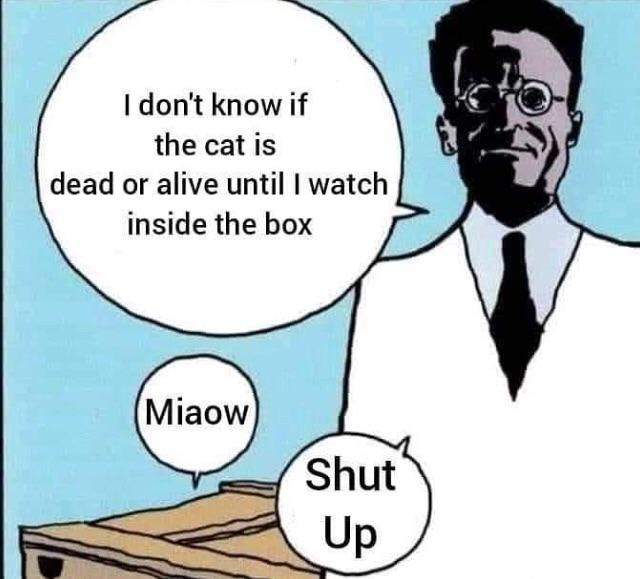this post was submitted on 19 Jan 2024
2 points (100.0% liked)
196
16542 readers
3374 users here now
Be sure to follow the rule before you head out.
Rule: You must post before you leave.
founded 1 year ago
MODERATORS
you are viewing a single comment's thread
view the rest of the comments
view the rest of the comments

IIRC, Erwin Schrödinger created the thought experiment as a critique of the popular theories surrounding quantum mechanics. (Wikipedia calls it Copenhagen interpretation, but I'm not a physicist so I'm not gonna pretend I know what that means.)
Again, I'm in no way qualified to explain this, but from what I've been able to understand, subatomic particles are constantly moving. Because they're constantly moving, it's not possible (by current means) to detect where any particle is at any given time. So, the best way scientists found to work with this constant movement was by assuming the particle was in more than one place at the same time.
Erwin Schrödinger, in a discussion with Albert Einstein, allegedly gave this analogy to describe the issue with this idea, that something simply can't be in multiple states at the same time. Ironically, this analogy became one of the most popular ways of explaining quantum physics.
Someone tell me I'm stupid if this is wrong or doesn't make sense.
I'm pretty sure the way it works is that you can't detect where a particle is exactly not because it's "always moving", it's cause it's literally impossible (since everything is a wave or something)
hopefully someone else can give a more complete answer
I'm relatively qualified. Studied physics all through college and spent a couple years working in quantum computing. I'll chime in here because Schrodinger's cat jokes are a pet peeve.
You are correct that, as far as we understand, it is literally impossible. There has been a competing theory for decades, but I'm not really up on the specifics https://en.wikipedia.org/wiki/De_Broglie%E2%80%93Bohm_theory. The reason it is generally rejected is that it appears to violate relativity.
Anyway.. the cat thought experiment is such a fun thought experiment to me because it specifically makes us think about a very practical issue with respect to quantum computing: decoherence. If you take his thought experiment to an extreme, it actually should be theoretically possible to create a state in which a macroscopic object (the cat) and a quantum object (the radioactive source) are indeed entangled. But that is absurd according to everything we've ever seen. So what's up? The missing concept here is decoherence -- while this state may theoretically exist, it'd decohere on timescales so small we can't even imagine. The fun connection here is that decoherence is the exact thing we're trying to fight in quantum computing. Essentially we're trying to make this thought experiment a reality for a much less complex system.
Some more on decoherence: https://en.wikipedia.org/wiki/Quantum_decoherence